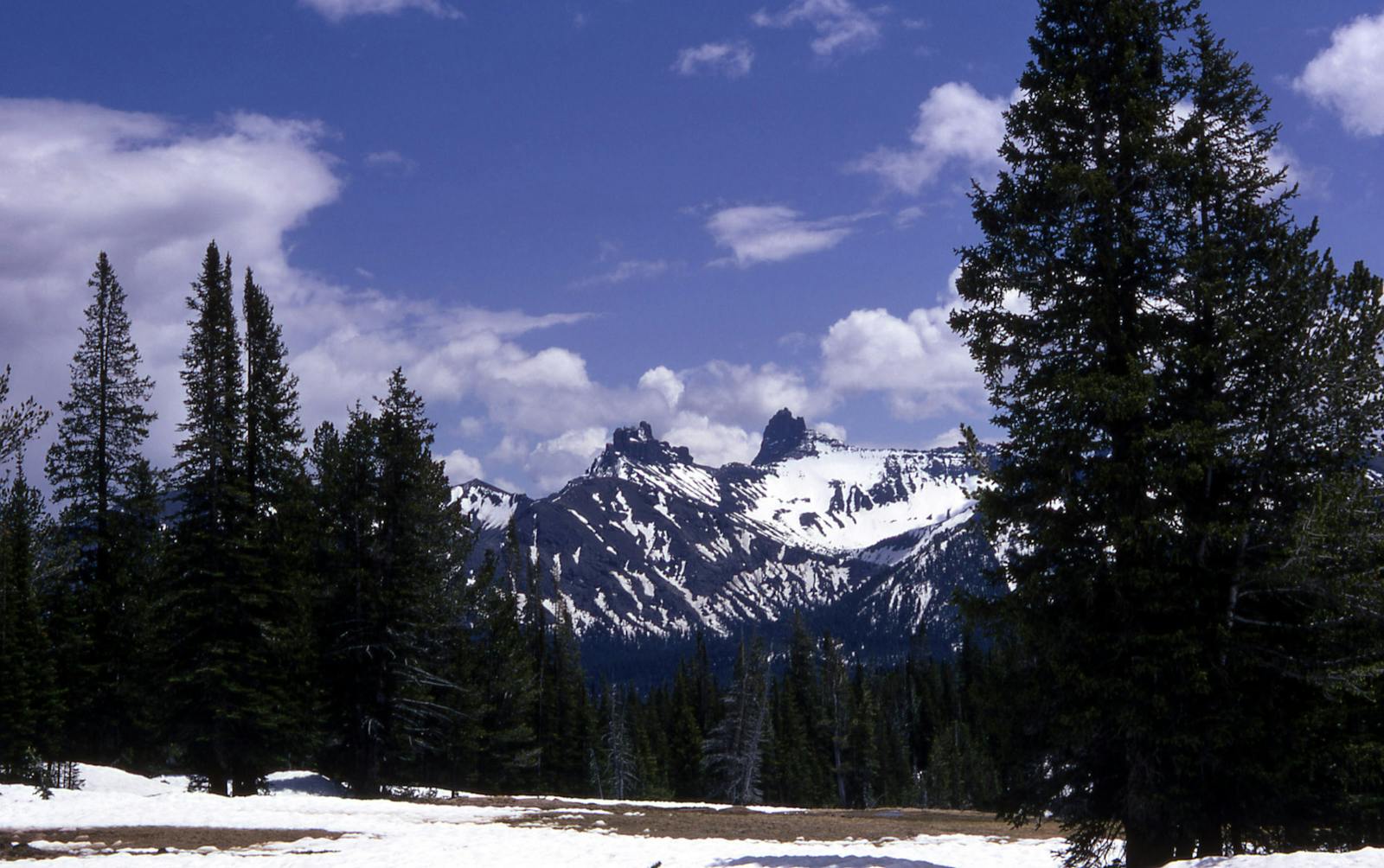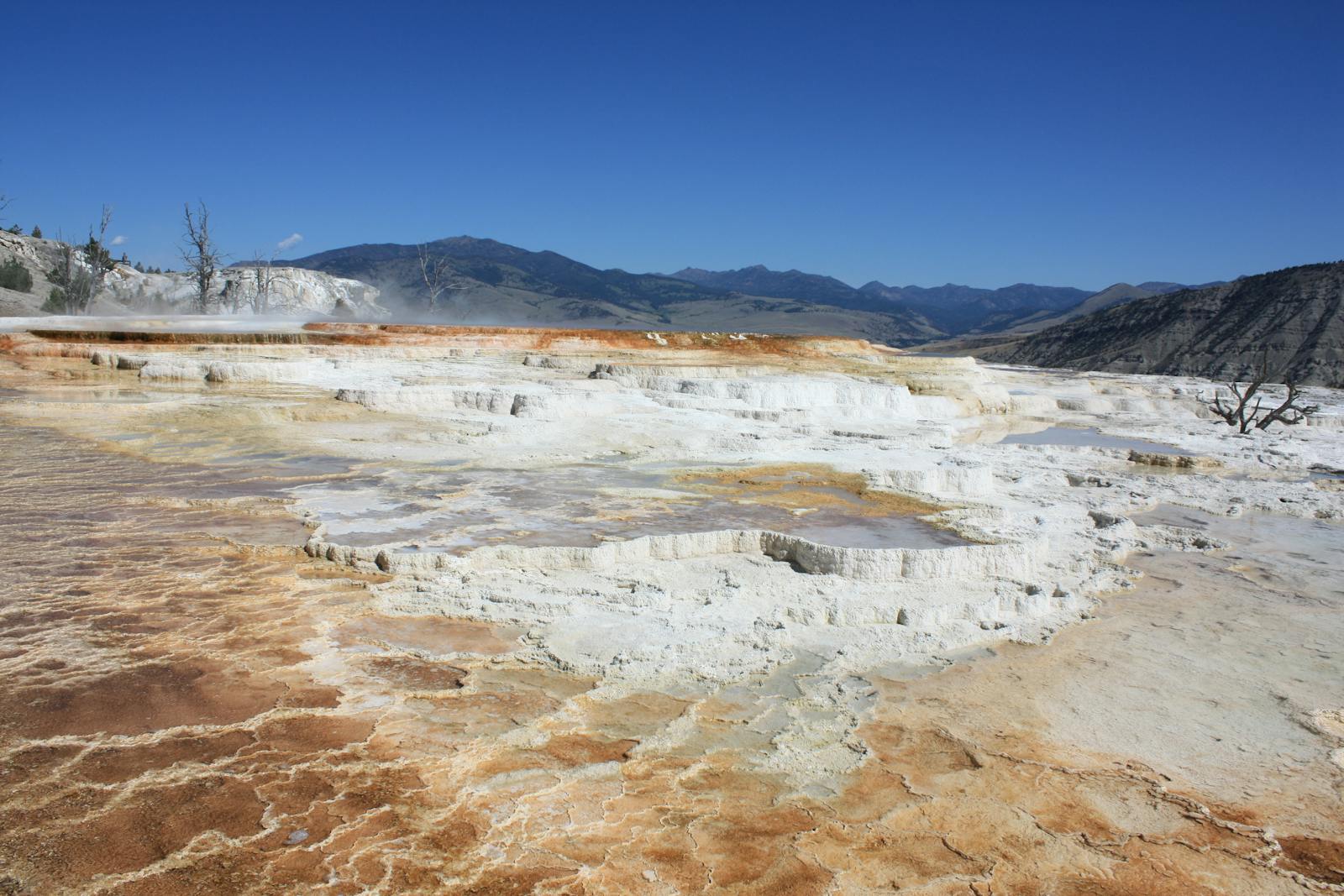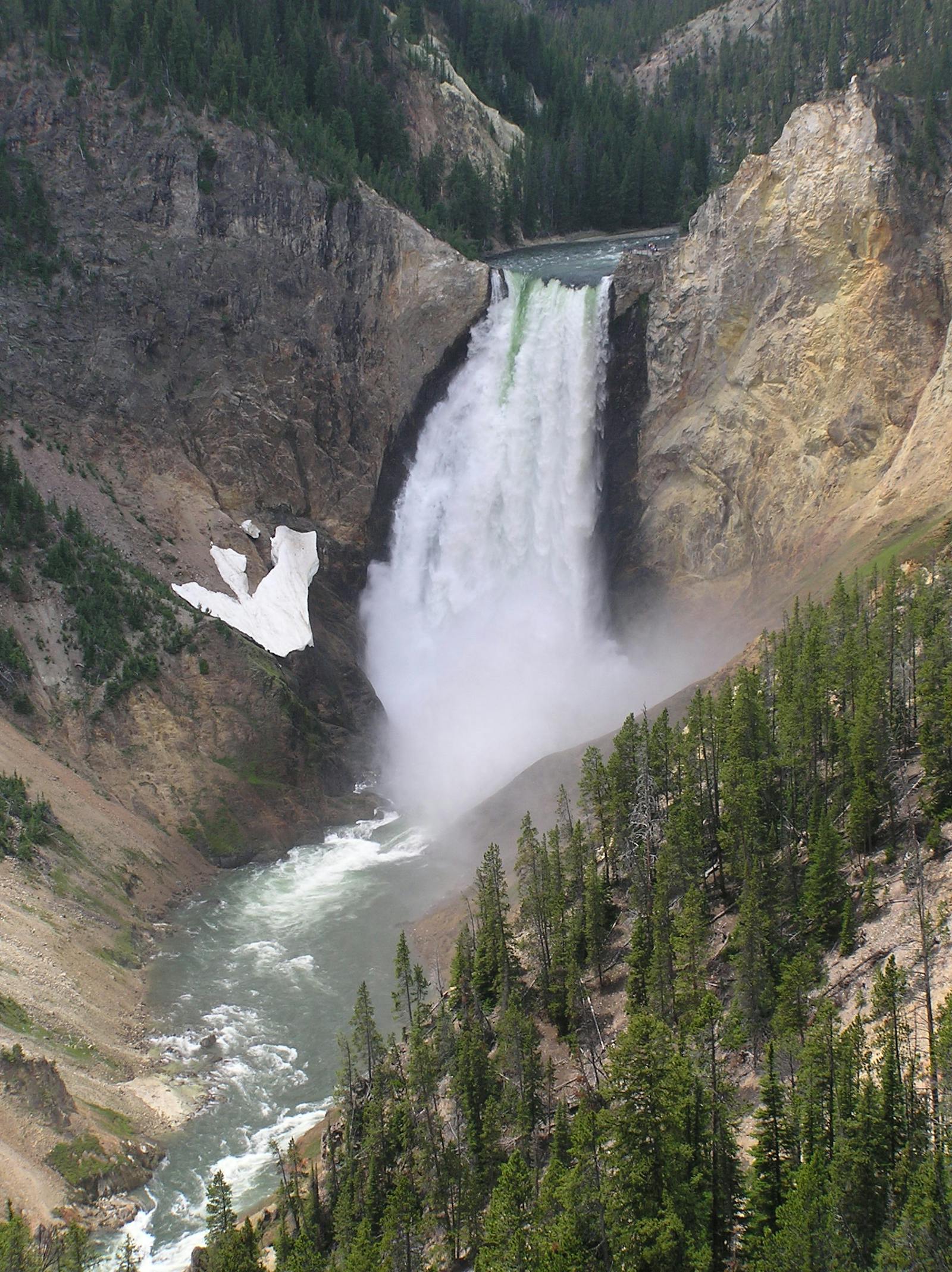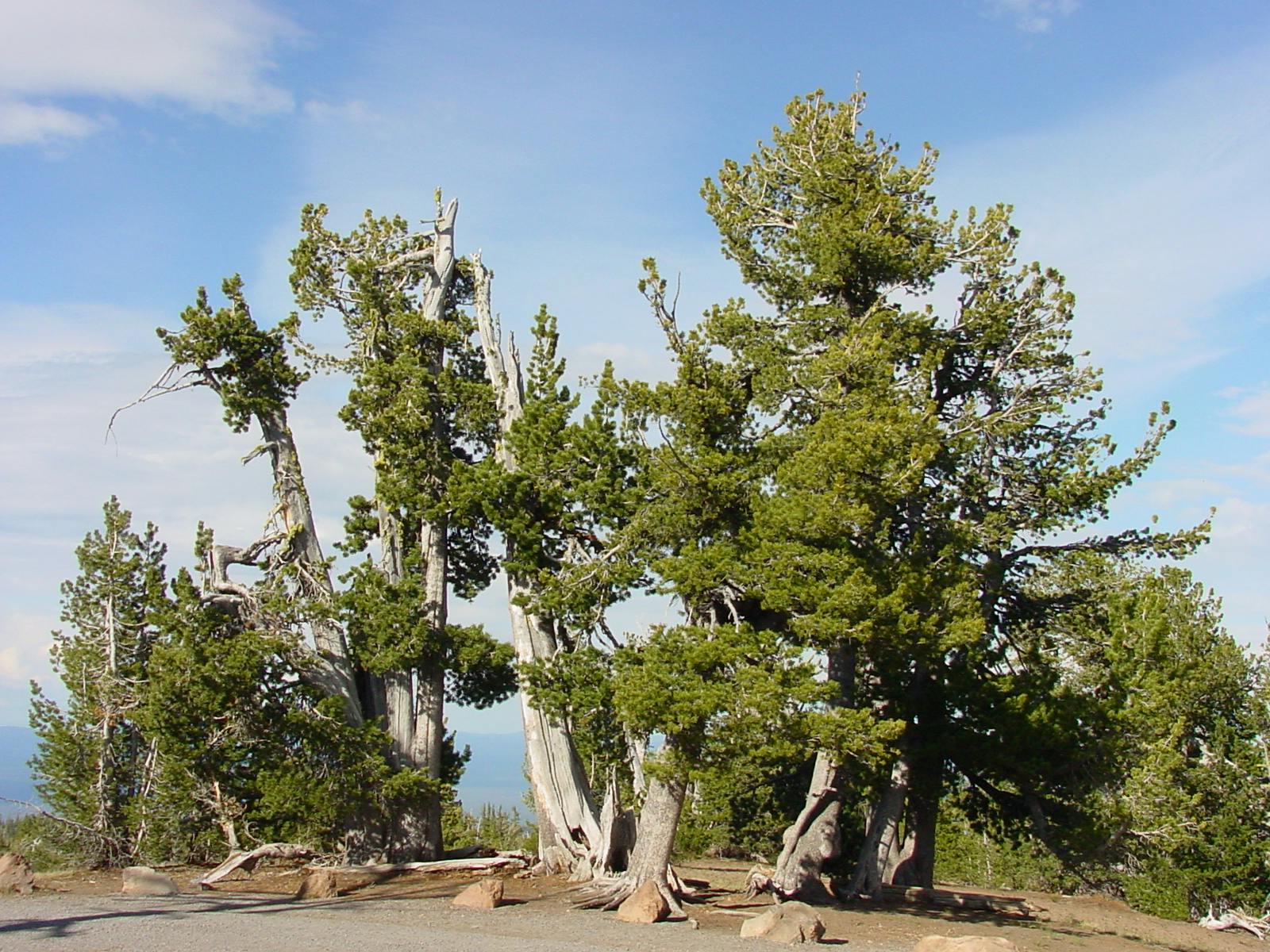South Central Rockies Forests
The ecoregion’s land area is provided in units of 1,000 hectares. The conservation target is the Global Safety Net (GSN1) area for the given ecoregion. The protection level indicates the percentage of the GSN goal that is currently protected on a scale of 0-10. N/A means data is not available at this time.
Bioregion: Greater Rockies & Mountain Forests (NA13)
Realm: Northern America
Ecoregion Size (1000 ha):
17,677
Ecoregion ID:
367
Conservation Target:
52%
Protection Level:
6
States: United States: ID, MT, WY, SD
The South Central Rockies Forests ecoregion contains the world’s first national park, Yellowstone, as well as Grand Teton National Park and many designated Wilderness areas. Despite these important protected areas, this vast region is only 18% protected. Protecting the 32% of habitat that is outside of protected areas and deserves protection would bring the total protected area to 50%.
The South Central Rockies Forests ecoregion encompasses the Yellowstone Plateau; the Sawtooth Range, Salmon River Mountains, most of the Bitterroot Mountains, and other ranges in Idaho; the Grand Tetons, Wyoming Range, and Wind River Range in Wyoming; the isolated Bighorn Mountains in Montana and Wyoming, east of the Yellowstone Plateau; the isolated Black Hills of Wyoming and South Dakota; and several smaller disjunct ranges.
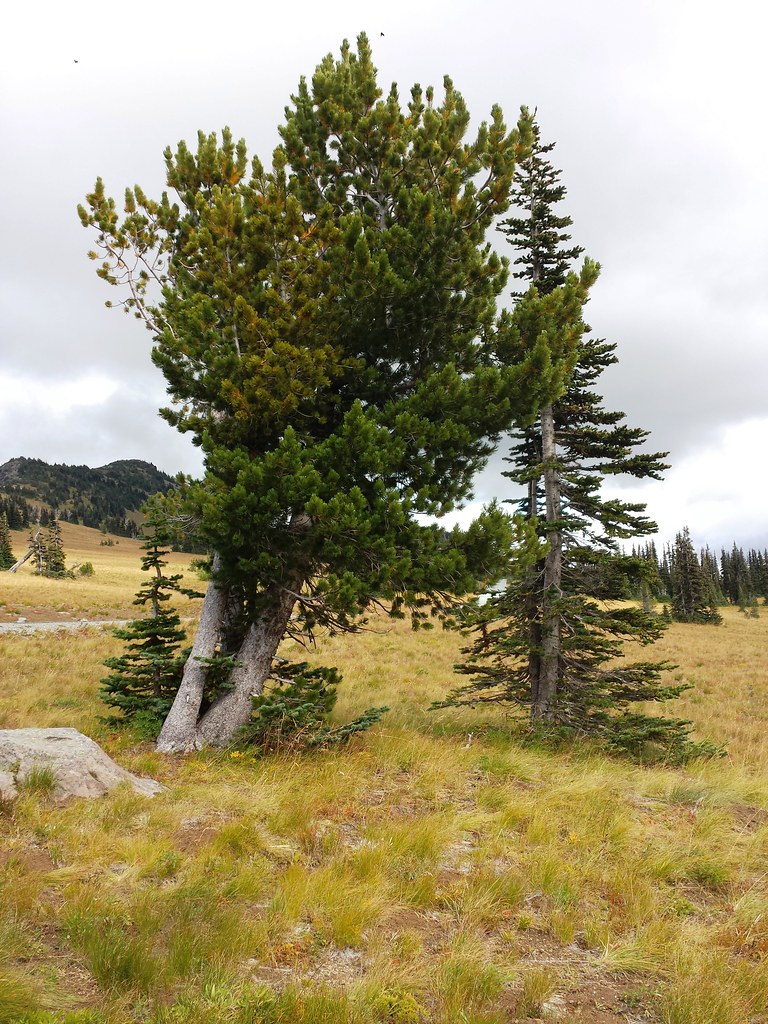
The flagship species of the South Central Rockies Forests ecoregion is the whitebark pine. Image credit: Creative Commons
Ecoregions that border or envelop the South Central Rockies are the Northern Rockies Conifer Forests to the north; the Montana Valley and Foothill Grasslands to the north, west, and east; the Snake-Columbia Shrub Steppe to the west; the Wasatch and Uinta Montane Forests to the south; the Wyoming Basin Shrub Steppe, mostly to the east; and the Northern Shortgrass Prairie to the east and enveloping the Black Hills.
The climate of the South Central Rockies Forests ecoregion is dry continental, generally drier than that of the adjacent Northern Rockies Conifer Forests ecoregion. Summers are short and winters long and cold. In Yellowstone National Park, the average annual temperature is 0.7ºC, with an average annual high temperature of 7.9ºC and an average annual low temperature of -6.6ºC. The average annual precipitation is 518 mm. The topographic variation of this ecoregion is enormous, with a corresponding diversity of local climates and vegetation. For example, the Bighorn Mountains rise 2,794 m over the surrounding lowlands.

Black bear sow with cub. Image credit: Creative Commons
Coniferous forest is the dominant vegetation across the ecoregion, with lodgepole pine the most abundant species. Lodgepole pine in subalpine areas regenerates after moderate to severe fire, typically with average fire-return intervals in the range of 300–400 years on the Yellowstone Plateau, but often with several fires occurring at shorter intervals, interspersed with very long intervals during which fuels accumulate. With centuries-long periods without fire, lodgepole pine forests are thought to succeed to “climax” forests of Engelmann spruce and subalpine fir, although the latter two species often dominate areas higher in elevation than lodgepole pine.
Quaking aspen is an ecologically important tree in this ecoregion. In high subalpine/treeline areas, whitebark pine is another important species and a key food source for many animals. One of these is Clark’s nutcracker, the major seed disperser of this pine. These birds each cache 30,000 to 40,000 seeds each year in small, widely dispersed patches, which their excellent spatial memory usually allows them to relocate. Unretrieved caches contribute to tree regeneration, and whitebark pine often grows in clumps of several trees that regenerated from single caches.
Douglas squirrels cut down and store whitebark pine cones in their middens, which are often raided by grizzly bears and black bears. Whitebark pine seeds are considered a critical seasonal food source for grizzly bears and use of these seeds at high elevations reduces human-bear conflicts. Unfortunately, whitebark pine is threatened by the introduced white pine blister rust, which causes high mortality, in addition to unusually large outbreaks of mountain pine beetle.
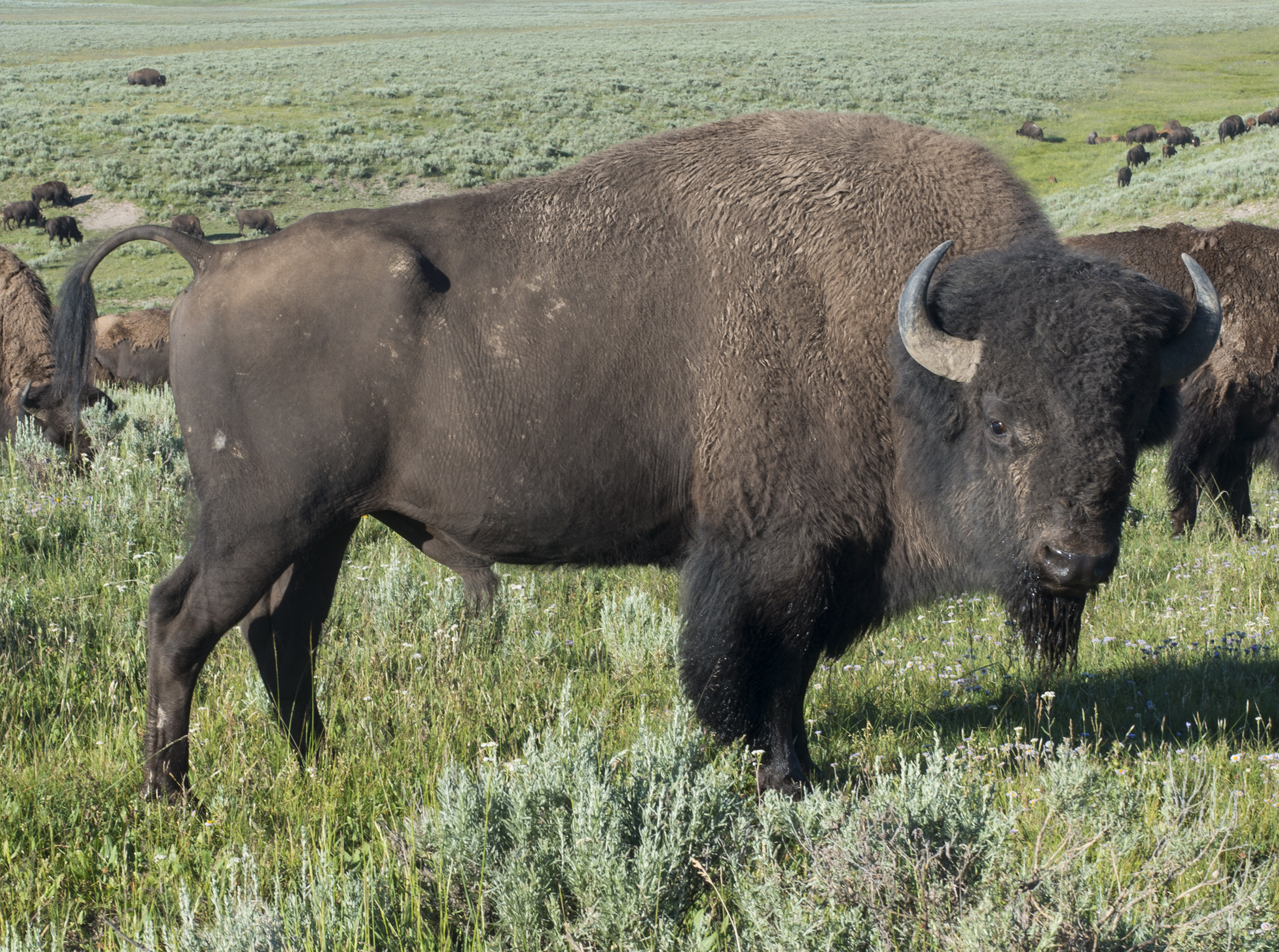
American Bison. Image credit: Stephen Pribut, Creative Commons
Lower elevations in these mountains are dominated by ponderosa pine and Douglas-fir, in addition to foothills grasslands, shrub steppe, and riparian woodlands. Other characteristic mammals are elk, moose, mule deer, American bison (primarily within Yellowstone), pronghorn antelope (at lower elevations), wolf, lynx, puma, coyote, beaver, marten, river otter, and snowshoe hare.
Additional birds include harlequin duck, ruffed grouse, dusky grouse, golden eagle, northern pygmy-owl and other owls, Steller’s jay, mountain chickadee, American dipper, and several species of thrushes, warblers, and woodpeckers. The black-backed and American three-toed woodpeckers depend on moderately to severely burned forests for their food resources and nesting trees.
This ecoregion is threatened by logging, mining, oil and gas development, intensive livestock grazing, intensive recreation, and other human activities outside of protected areas, as well as exotic species.
Priority conservation actions for the next decade are to: 1) vastly increase designation of conservation lands both public and private, particularly with focus in enhancing connectivity of species into and out of the Greater Yellowstone Ecosystem; 2) design and implement conservation strategies and tools for human-wildlife coexistence; and 3) greatly slow the rate of energy development and intensive recreation.
Citations
1. Ricketts, T.H. et al. 1999. Terrestrial Ecoregions of North America: A Conservation Assessment. Island Press, Washington, D.C.
2. Peet, R.K. 2000. Forests and meadows of the Rocky Mountains. Pages 75-121 in M.G. Barbour and W.D. Billings, eds. North American Terrestrial Vegetation, 2nd edition. Cambridge University Press, Cambridge, UK.
3. South Central Rockies Forests. https://en.wikipedia.org/wiki/South_Central_Rockies_forests
